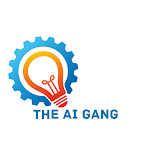Artificial intelligence has come a long way in recent years, and one of its most exciting applications is in the world of art. AI image generation is a new and rapidly evolving field that has the potential to change the way we create and appreciate art. In this blog post, we'll explore the history, types, advantages, and limitations of AI-generated art, as well as some notable examples and the future of this emerging field.
History of AI in the Art World
Artificial intelligence has been used in the art world for several decades. Early examples include Harold Cohen's "AARON," a computer program that could create abstract art, and William Latham's "Mutator," a program that could create organic shapes. In recent years, however, the use of AI in art has become much more widespread, with artists and technologists experimenting with different types of AI algorithms to create a wide range of art forms.
Types of AI Art
There are several types of AI algorithms that can be used for image generation, including generative adversarial networks (GANs), neural style transfer, and Deep-Dream.
GANs are a type of machine learning algorithm that involves two neural networks: a generator network and a discriminator network. The generator network creates new images, while the discriminator network evaluates them for authenticity. The two networks work together in a feedback loop to create increasingly realistic images.
Neural style transfer involves applying the style of one image to another. This technique is used to create art that combines elements of different styles or to transform photographs into artwork.
Deep-Dream is a technique developed by Google that involves feeding an image into a deep neural network and then modifying it to enhance certain features. The result is a surreal, dreamlike image that resembles the hallucinations experienced during a dream.
Advantages of AI Art
One of the main advantages of AI art is increased creativity. AI algorithms can generate an infinite number of images and styles, opening up new possibilities for artists and expanding the range of artistic expression.
Another advantage is efficiency. AI algorithms can generate images much faster than humans, allowing artists to create more work in less time.
AI-generated art is also more accessible to everyone. Anyone with a computer and an internet connection can use AI algorithms to create art, regardless of their artistic ability or training.
Finally, AI-generated art has a unique style that is different from traditional art forms. The surreal, dreamlike images produced by Deep-Dream and other AI algorithms are unlike anything created by human hands.
Limitations of AI Art
While AI art has many advantages, it also has some limitations. One of the biggest limitations is the lack of emotion. AI algorithms can create beautiful and unique images, but they lack the emotional depth and meaning that is inherent in traditional art forms.
Another limitation is the overreliance on algorithms. AI-generated art can become formulaic if artists rely too heavily on pre-existing algorithms instead of creating their own.
Finally, reproducing traditional art forms is difficult using AI algorithms. While AI algorithms can create original art, they have a much harder time recreating existing art forms, such as portraits or landscapes.
Examples of AI-Generated Art
There are many examples of AI-generated art, from abstract images created by GANs to realistic portraits created by neural style transfer.
Portrait AI is a website that uses GANs to generate realistic portraits. Users can select different styles and attributes, such as age or gender, to create a custom portrait that looks like a real person.
AICAN is an AI algorithm developed by Rutgers University that creates abstract art. The algorithm was trained on a dataset of abstract art from the 20th century, and it uses a GAN to generate new images that resemble the ones in the dataset.
One notable example of AI-generated art is "The Next Rembrandt," a project that used a combination of AI algorithms to create a new painting in the style of the famous Dutch artist Rembrandt. The project involved analyzing Rembrandt's existing works to determine his style and techniques, and then using neural networks to create a new painting that replicated these characteristics.
The Future of AI Art
As AI technology continues to advance, it's likely that we'll see even more exciting developments in the world of AI-generated art. One area that is already being explored is the use of AI algorithms to create art in collaboration with humans. For example, some artists are using AI algorithms to generate initial ideas or sketches, which they then use as a starting point for their own creative process.
Another area of potential development is the use of AI algorithms to create art that responds to its environment or audience. For example, an AI-generated sculpture could use sensors to detect changes in its surroundings and adjust its shape or form accordingly.
Conclusion
AI image generation is an exciting and rapidly evolving field that has the potential to change the way we create and appreciate art. While AI-generated art has its limitations, such as a lack of emotional depth and a tendency towards formulaic creations, it also has many advantages, including increased creativity, efficiency, and accessibility. As AI technology continues to advance, it's likely that we'll see even more exciting developments in this emerging field, and we can't wait to see what the future holds.










